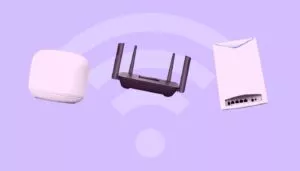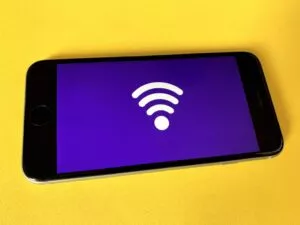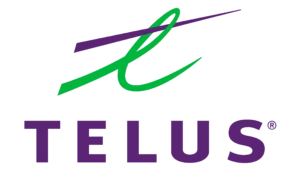
The Best Internet Providers in Canada
Whether your gaming, streaming Netflix, or checking your Facebook feed, having a strong internet connection is important. After all, there is nothing more annoying than slow and unstable internet. There are plenty of internet providers in Canada. In fact, choosing one can be difficult. That’s why we created this guide to list the best internet providers in Canada.
Our top picks
What to look for in an internet provider
Region served: Not all internet providers serve every province. Some are only available in certain parts of Canada, like the Maritimes or Western Canada. Most companies have a drop-down feature that lists the provinces they serve. Some let you enter in your address to see if your area is covered. Your address can also influence the plans available to you. For example, some people no longer have access to fibre internet when they move to a new home/apartment in the same city. Always check the provider’s availability before signing up.
Prices: The prices an internet provider charges can affect several things. Cheaper plans usually have slower internet speeds, data limits, and a limited number of devices you can connect (e.g., 1-5 devices). Higher priced plans (e.g., over $100) are better in those three categories. Many providers have special deals where you get a good internet plan for an affordable price. Shaw’s Fibre+ 300 is a good example.
Length of contract: Some internet providers have contracts that lock you in for a certain period of time. Other companies have no contracts at all. Consider how long you’ll want to stay with your provider. If you’re happy with your plan, the contract length should not be an issue. But if you need to suddenly cancel your plan, you might be hit with an early cancellation fee. If you want flexibility, stick with a zero-contract internet provider.
Speeds: This refers to how fast your internet connection is. Companies will list their download (data from the internet to your computer) and upload speed (data from your computer to the internet). Internet speeds are measure in megabytes (Mbps) and gigabytes (Gbps). The general range for internet speeds is 10 Mbps – 1.5Gbps. Anything 100 Mbps and over is considered fast. Anything below 100 Mbps is considered slow. Most providers offer the full spectrum of internet speeds . People using the internet for basic tasks (e.g., reading emails) can go with slower internet speeds. If you like gaming or streaming Netflix for several hours, then you stick with a higher Mbps plan.
Data limits
Internet data limits are like talk/text minutes for mobile phone plans. They are a set amount of data you can use. Anytime you browse a website, play a video game, or stream a YouTube video, data is used. Many internet providers have data limits for their lower priced plans (e.g., 250 GB). Higher priced plans tend to have unlimited data usage. If you go over your data limit, an overage fee is charged to your account. People frequently using the internet for several hours at a time should go with an unlimited data internet plan. If you use internet for simple tasks, you can select a plan with a data limit.
Membership benefits
Some internet providers have deals and benefits for their subscribers. They are usually called bundles. With the bundles you can receive a free smart TV, wireless earbuds, and other gadgets. Discounts on internet plans are also available. For example, you can combine your internet and mobile phone plans to receive discounts on both.
Shaw
Shaw has several internet plans, with prices between $60.00 to $175.00 per month. Each plan has an initial 24-month contract. Signing up for this contract gets you a discount on your monthly bill, which range between $10.00 to $50.00. Once the two-year term finishes, prices return to normal. The cheaper Shaw plans have data limits, while the higher priced plans have unlimited data. When you sign up for Shaw internet, you get access to Shaw Go WiFi hotspots. These hotspots are available in various locations, e.g., shopping malls or public libraries. For $5.00 a month, you can include Shaw Stream with your internet package. Shaw internet is available in Alberta, B.C., Saskatchewan, and Manitoba. For the rest of the country, Shaw is available through their internet partners. For example, Shaw’s partner for Ontario is Poynt360.
From my experience, Shaw was a good internet provider. The connection was fast, and I rarely experienced lags or outages. My household had around 15 devices connected to the internet, and it was still fast and stable. Customers also agree that Shaw provides stable and speedy internet. The bundles offered (e.g., Shaw internet + TV) was another positive noted by customers. On the downside, some people thought the prices were expensive. One customer noted that Shaw internet is best suited for people in the middle to high income brackets. The contract length was another common complaint. You will be charged an expensive cancellation fee if you leave Shaw before the contract ends. One person claimed that Shaw signs you up for services without your consent. The services will show up on your monthly bill, a bad surprise to be sure. However, this person’s claim could not be verified. It may be an isolated personal experience.
Pros
- Stable connection.
- Fast internet speeds.
- Good discounts for 24-month contract.
- Good bundles.
Cons
- Prices are high.
- Cancellation fees if you leave before term is over.
TELUS
Telus is another major internet provider in Canada. It mainly available in B.C. and Alberta. Prices start at $65.00 per month for the basic packages. For the faster plans, prices range from $105.00 – 155.00 per month. The plans have a 2-year term, which gives you a $50.00 discount on your monthly bill. Unlimited data is included for the higher-priced plans. However, this only lasts for the initial 24 months of the term. Once that expires, it costs an extra $20.00 per month for unlimited data. Otherwise, a data limit is applied. The plans available also depends on your location. Some address cannot sign up for certain Telus plans. Based on my address, I can sign up for Telus’ fastest internet plans, but I cannot sign up for their cheaper packages. My parents only have access to two of Telus’ cheaper plans. You can either install Telus internet yourself or have professional do it for you (you will have to pay a fee). Telus offers exclusive deals for their members. For example, you can get a free pair of Apple AirPods Pro when you sign up for the PureFibre 1.5 gigabit internet plan.
Customers said that Telus had fast internet speeds and a stable connection. Compared with other providers, people did not experience that many network outages. The Telus WiFi hubs strengthened and widened people’s home internet. Customers also enjoyed the bundles that came with certain internet plans. Prices were the main complaint people had for Telus. Many found the plans too expensive. Another complaint customers had was the inconsistent availability. One customer said certain plans were available to his neighbours but not to their household.
Pros
- Fast speeds.
- Good bundles (free items and discounts).
Cons
- Your address determines the plans available to you.
- Free unlimited data restricted to two-year term.
Bell
Bell is the major internet provider for eastern Canada (Ontario, Quebec, the Maritimes, and Newfoundland & Labrador). The plans available will depend on the province you live in. But in general, prices start at $55.00 a month for the basic plan (Fibe Internet). The highest priced plan (Gigabit Fibe 8.0) costs $150.00 per month. With a two year contract, a $15.00 credit discount is applied. Besides the basic plan, each internet package has unlimited data usage. Each package comes with the Bell Giga Hub modem, which has the latest WiFi 6E technology. Additional items are bundled with your internet plan, e.g., McAffe® Security software, Bell WiFi app etc. For $5.00 a month, you can add WiFi pods to your internet plan. The pods come with WiFi 6E and provide internet connection for every room in your house.
Based on customer reviews, Bell might be one of the fastest internet providers in Canada. Customers praised the high internet speeds. One person said Bell’s fiber technology gave them higher than advertised speeds. However, affordability was an issue for several people, with several reviews saying Bell was too expensive. Some customers said they had to leave Bell to find provider that fit their budget.
Pros
- Unmatched internet speeds.
Cons
- Expensive.
oxio
If you’re in the need of an affordable internet provider, look no further than Oxio. The company offers unlimited data plans at low prices. Their fasted plan (1000 Mbps) costs $95.00 per month, significantly cheaper than what the big-name providers charge. There are no contracts and free installation. Oxio provides a price breakdown that shows how the company uses your money. This makes Oxio one of the most transparent and trustworthy internet providers in Canada. The company has referral codes that people can use to get one-month free internet.
On the website PlanHub, Oxio is rated 4.7 stars by customers. This one of the highest ratings on the site, and it demonstrates the level of satisfaction people have with Oxio. Customers appreciated the company’s transparency and their no contract structure (it gave people greater freedom and flexibility). The connection speeds were good, and installation was quick and simple. The only drawback was the lack of a hotline number for customer support. You can only contact them via email, Facebook Messenger, or SMS. Response times do not change drastically. However, people who prefer talking with customer support over the phone might not like the current contact methods.
Pros
- Affordable price.
- Referral codes that give you free internet for one month.
- No contracts.
- Transparent.
Cons
- No phone number for customer service.
Methodology
For this buying guide, we spent over eight hours researching several Canadian internet providers. We based our selections on availability, data limits, connection speeds, and customer satisfaction. We tried to select providers that were available in every Canadian province. Our team read several customer reviews to learn what people want out of a good internet provider. Lastly, we consulted various sources for further information on internet providers.
Frequently asked questions about internet providers
How much does internet cost in Canada?
In Canada, the cost of internet depends on the provider. The average cost for cheaper plans is $40.00-$60.00 per month. Higher priced plans range from $155.00-$175.00 per month. Most companies have discounts for the first two years of the contract. For example, Telus removes $36.00 off their PureFibre Gigabit plan for 24 months. Instead of paying $135.00 per month, you pay $99.00.
Who has the cheapest internet package in Canada?
Oxio is one of the cheapest internet providers in Canada. Their prices start at $40.00 a month for their basic plan: 25 Mbps download speed with unlimited data. Their fastest plan (1000 Mbps with unlimited data) costs $95.00 per month. In Ontario and Québec, Virgin Plus has affordable internet plans. Prices start at $70.00 per month and go up to $90.00. For the first year of your plan, you get a $40.00 or $45.00 discount. VMedia is one of the cheapest internet providers in the Maritimes. Their Internet 50 plan costs $54.95 per month, put for 12 months you get a $20.00 discount. This plan gives you 50 Mbps download speed plus unlimited data. If you want something faster, the Internet 150 plan has 150 Mbps download speed with unlimited data for 69.95 a month.
Who has the fasted internet in Canada?
According to the website Speedtest, the fastest internet provider in Canada for Q3 2022 is Rogers, with a median download speed of 223.89 Mbps. Shaw came in second place with 206.06 Mbps. Bell Canada rounded out the top three with 157.05 Mbps.
What is considered high-speed internet in Canada?
In Canada, anything over 100 Mbps is considered high-speed internet. The fastest internet speed offered by providers is usually 1.5 Gbps.
How do I switch internet providers?
Switching internet providers is a fairly simple process. Before you start, review the contract you have with your current provider. Most companies charge an early exit fee if you leave before the contract ends. If your current provider has no contracts, you don’t have to worry about this. If you have an email address with your current provider, you may not have access to it once you make the switch. if that’s the case, transfer your data to an email service like Gmail.
To start, let your current provider know of the switch. Some sites recommend letting the provider know 30 days in advance. While this isn’t legally required, it can help make the switch easier. For example, the provider can give you heads up on any outstanding payments you owe. Once you’ve selected a new provider and plan, contact them to request a service transfer. Your new internet provider will send a notice of cancellation to your current provider. When your current provider receives the notice, they will cancel your service immediately. Your new internet provider will take care of the handover.
How do you set up home internet?
Your internet provider will give you an internet modem and the required cables. In most cases, you’ll need a coax cable and power cord. Optional items include an ethernet cable or 2-way splitter. To start, connect the coax cable to the modem, and insert the other end into the coax cable outlet. Next, attach the power cord to your modem and connect the other end to an outlet. Once the coax and power are connected, the modem should automatically start up. Some modems require you to press a button. Your modem will begin the activation process, which can take up to 15 minutes. A small light(s) will flash during the process. Activation is complete when the light(s) turn a solid colour. If the colour doesn’t change, contact your provider’s customer support team.
The WiFi network name and password will printed either on the side or top of your modem. To connect your devices, open their WiFi settings. Select the network name and enter in the password. After you’ve connected, you can customize the name and password.
Place your modem in a central location in your home. Ideally, the modem should be in the open and raised off the ground. Avoid placing it in confined spaces. Shaw recommends putting the modem away from other household appliances, metal or stainless-steel objects, and electrical equipment. This limits WiFi interference.
Read more

How to Choose an Internet Plan
With so many internet plans available, read to find out how to choose the right one for your home or business.

WiFi Booster: The Best Wi-Fi Extenders in Canada
WiFi boosters can expand your wireless coverage, but are they worth it?

The Best Wireless Routers in Canada
Great internet connection requires an amazing Wi-Fi router. Find the perfect one here.

The Best Powerline Adaptors in Canada
No more dead zones! Boost your internet connection with these Powerline Adaptors



